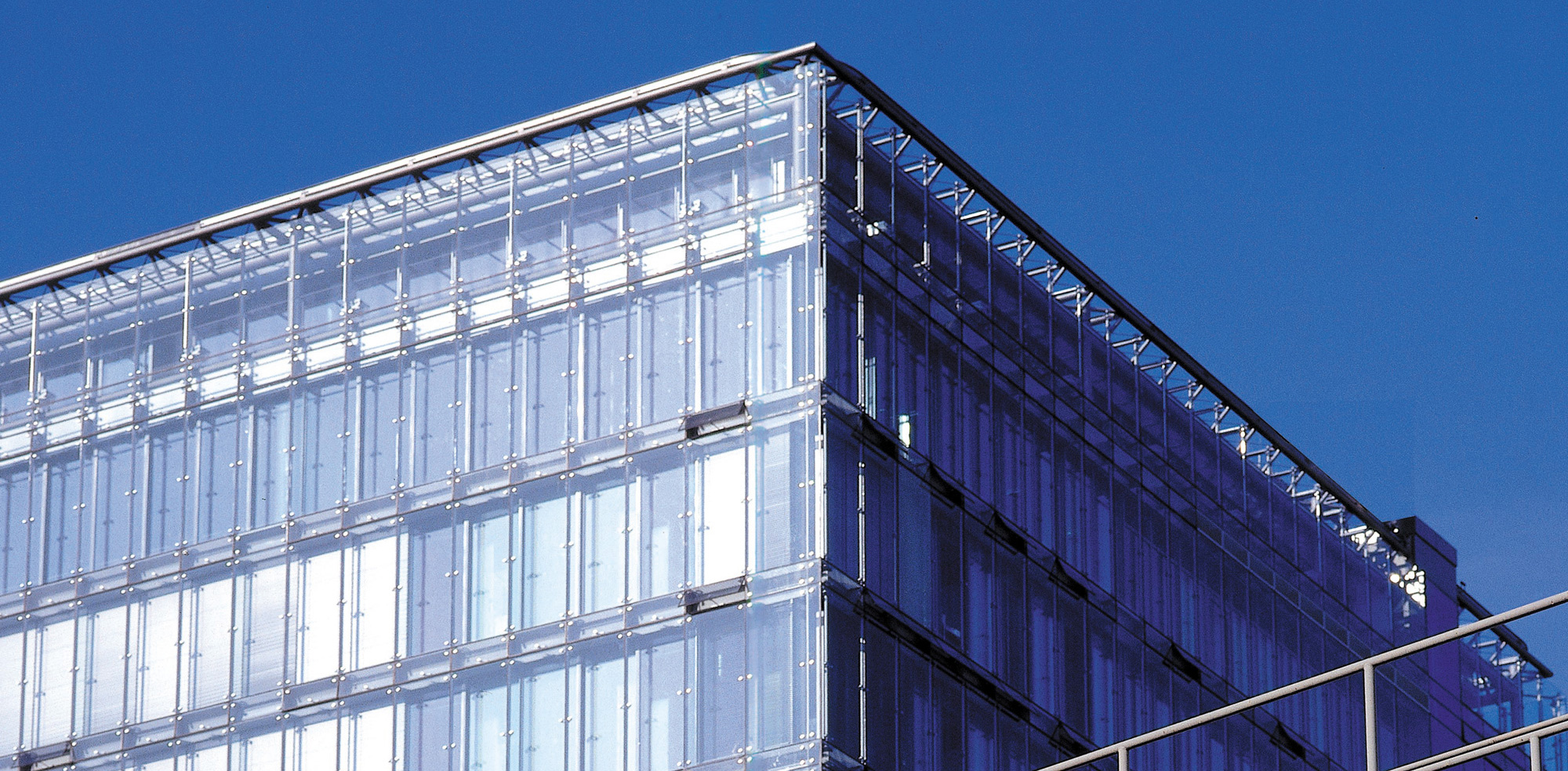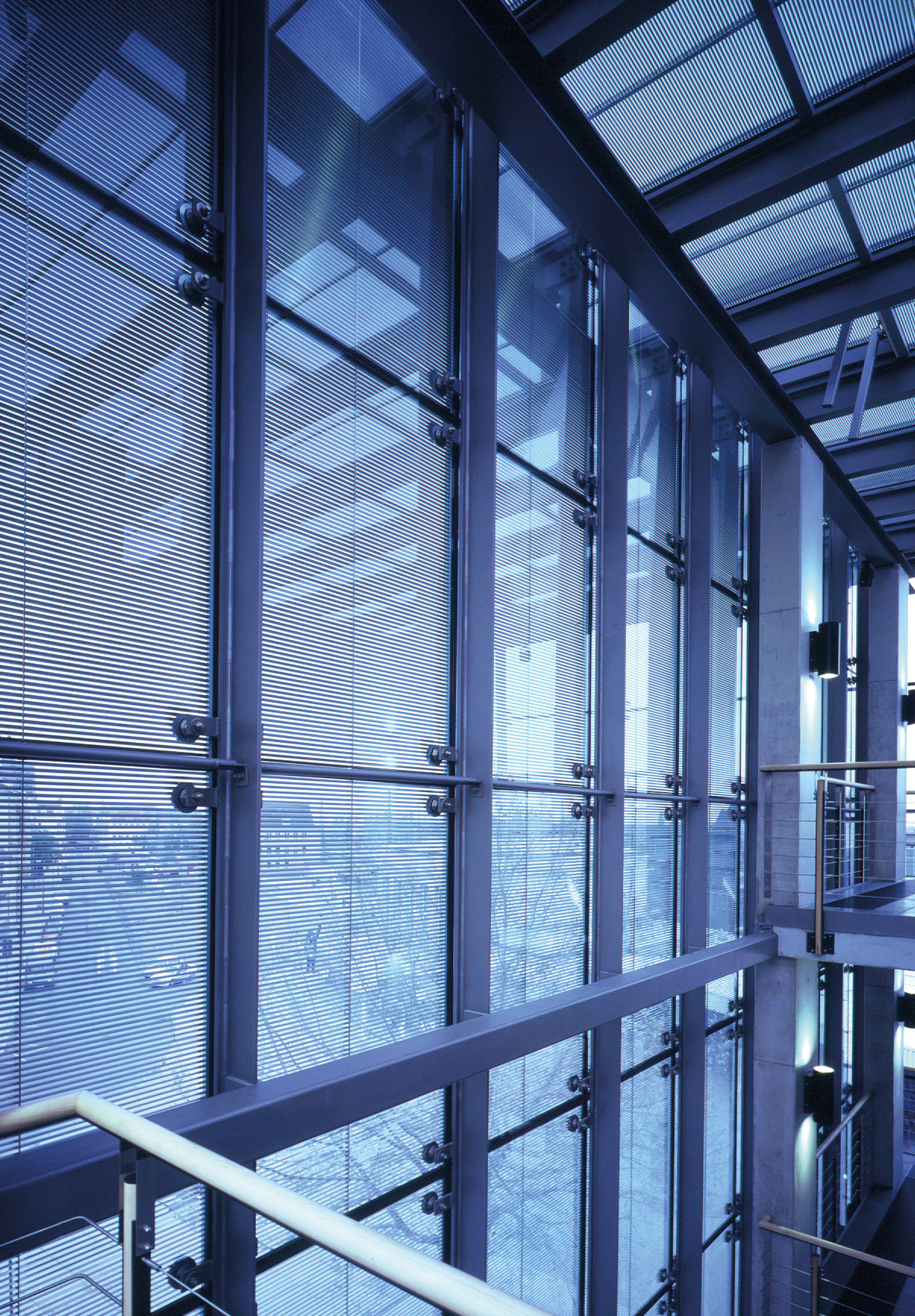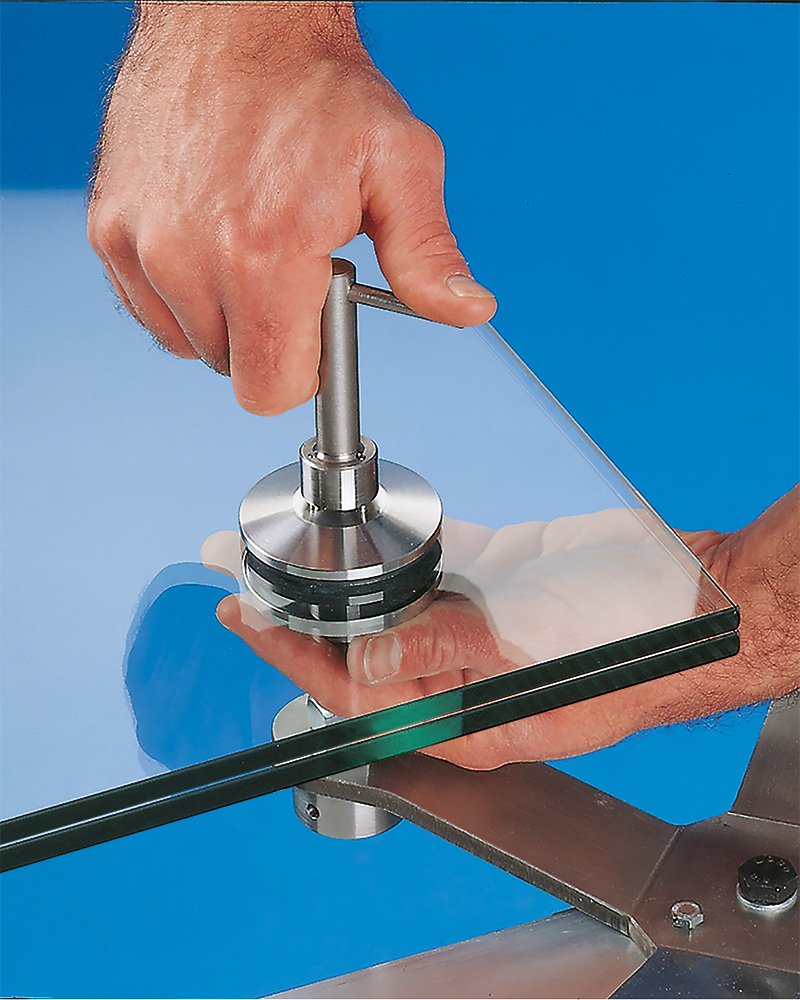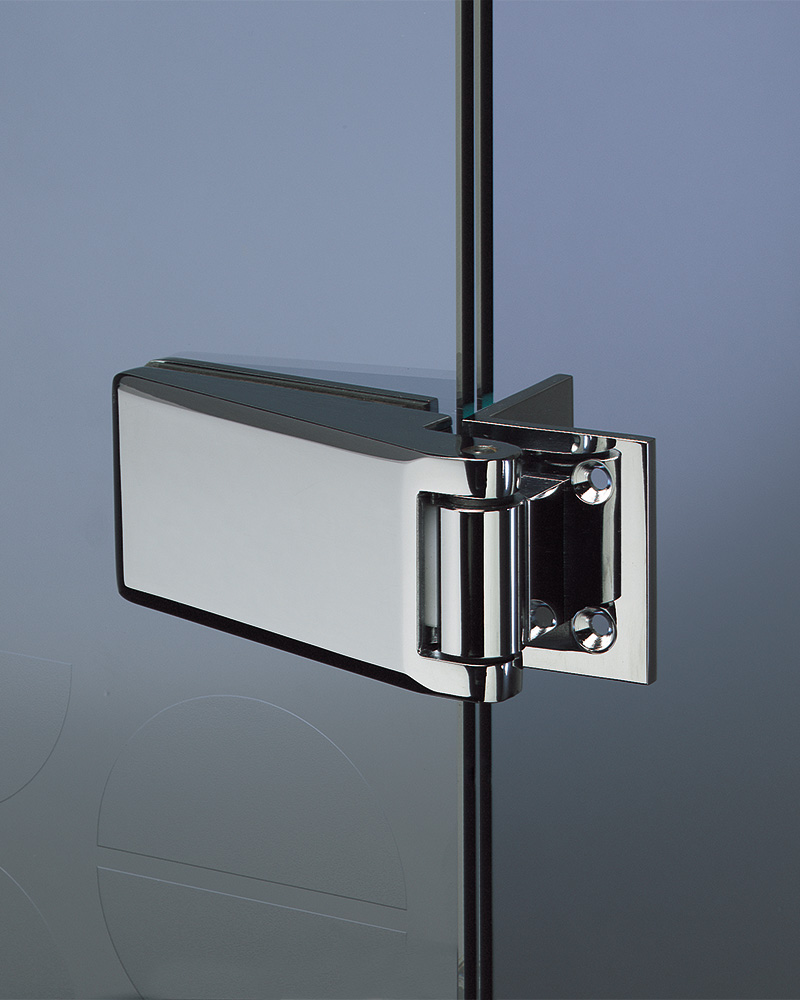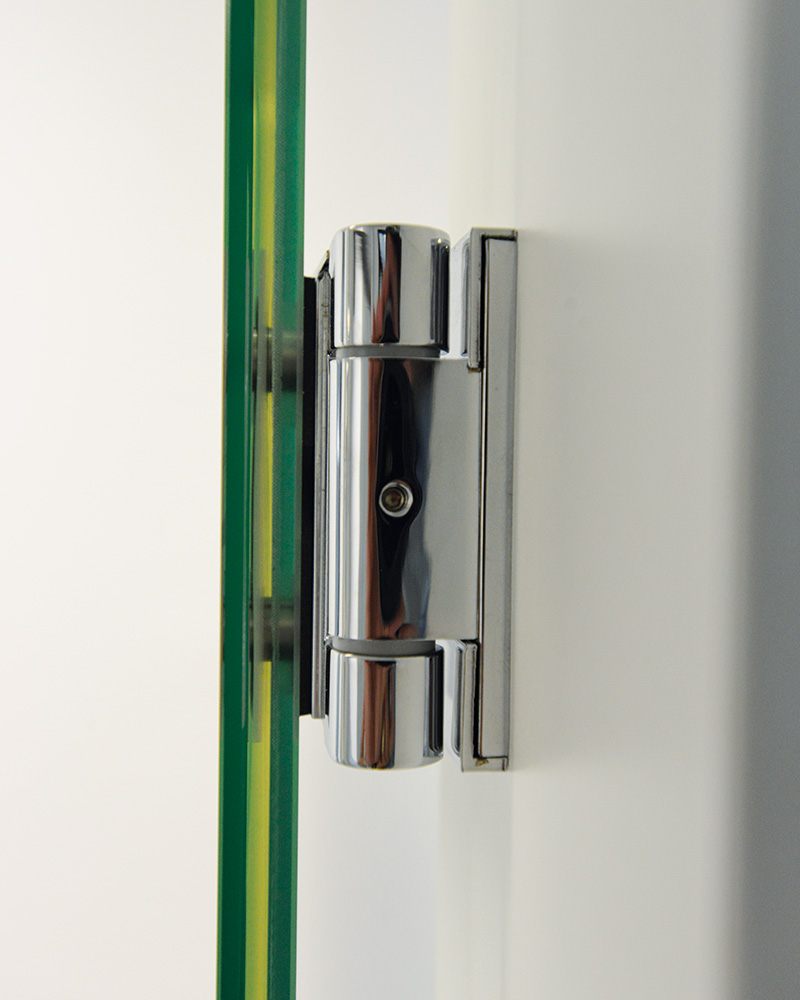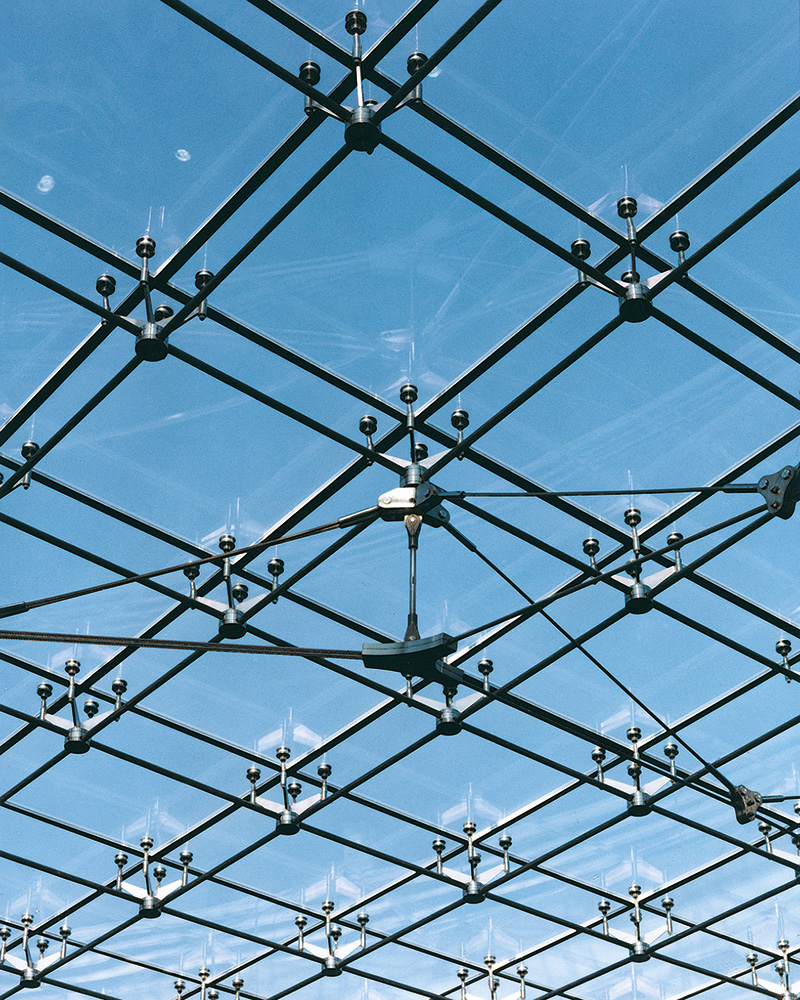The processing of laminated safety glass presents a great challenge to fastening technology, at least in the case of frameless systems.
If, instead of a 8 mm tempered- a laminated 8/2 glass panel made of 2×4 mm tempered glass is used, compressive load, gravity etc. acts upon each one 4 mm tempered glass panel, which is correspondingly less resilient than an 8 mm panel. One of the reasons why the new EN 14428 for shower enclosures is only permitted without drilling.
Conventional fittings are attached by pressure from both sides. In the case of laminated glass this creates a “crushing” of the PVB or EVA composite in the fitting area. This compound reacts similar to rubber, it “works” against it. In addition, there are shear and oscillation movements in the fitting area, so air, moisture or chemicals penetrate into the composite and cause delamination.
Conventional fittings work with through-holes. However, this is not only undesirable in the case of shower cubicles, since flushness is preferred and the use of countersunk screws is less possible in the case of laminated glass, as well as water can pass through the holes and lead to leakage or a boost of the delamination process. Even greater problems arise when fixing insulating glass. Conventionally, the gas filled glass must be produced with gas-tightly protected inner tubes in the bore area, so that the fastening elements can be guided through the tubes. However, a later leakage of the gas can hardly be excluded.
